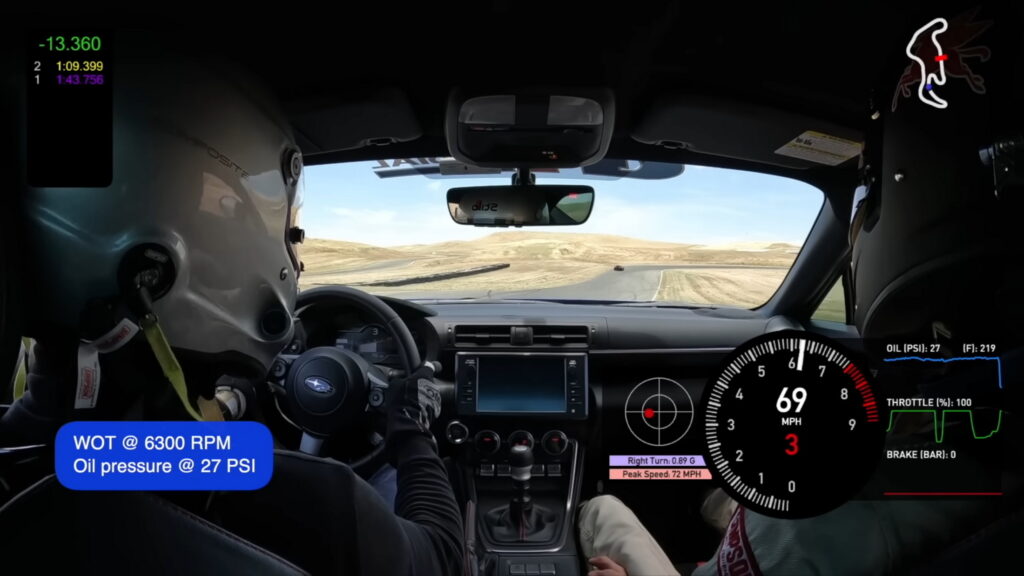By all accounts, the second-generation Subaru BRZ and Toyota GR86 are wonderful cars to drive, but you might want to think twice about taking them to a track. That’s because a small, but significant number of owners have reported engine failures. One owner thinks oil pressure loss in long right-hand corners may be one of the factors contributing to those problems.
The owner tested his own 2022 Subaru BRZ, alongside a very lightly modified 2022 Toyota GR86, and a 2017 Subaru BRZ, for comparison. All were tested at Thunderhill Raceway Park, by a variety of drivers at different skill levels, and the newer vehicles, equipped with the latest FA24 engine, experienced significant, repeatable oil pressure losses in right-hand corners.
In a video detailing his findings, he shares footage of the vehicles on-track, along with the real-time telemetry showing oil pressure, RPM, and throttle position. The vehicles all show stable oil pressure in the straights, as well as in left-hand corners.
However, in right-hand corners, especially those with elevation changes, the oil pressure drops, by more than 50 percent in some cases, in the cars equipped with the FA24 engine. In the BRZ equipped with the older, FA20 engine, some oil pressure losses can be seen in the same corners, but they are neither as large, nor as sustained as those in the newer models.
Read: Toyota Says That Using A GR86 On A Race Track Will Not (Necessarily) Void Its Warranty

Now, it should be noted that three cars on one track is a pretty small sample size. Although this seems like a well-designed and well-intentioned effort at discovering what is causing issues in these vehicles, even the people behind the experiment are careful to note that this may be just one part of the problem. For its part, Subaru suggests that dipping oil pressures are a normal thing.
“Subaru of America stands behind the design integrity of the FA24 engine which is used reliably in thousands of vehicles,” Subaru told Carscoops in a statement. “Oil pressure varies in all engines based on RPM, temperature, cornering loads and numerous other external and internal factors. This is normal in an engine duty cycle. The FA24 engine is designed to perform within a wide set of tolerances for road use, and the Subaru BRZ is designed as a road car. Race cars are specially modified to be used for race conditions.”
Toyota did not immediately respond to our request for comment.
The experiment’s findings are of note for a couple of reasons, though. For one, regardless of whether this is leading to engine failures, oil pressure loss at high RPM is less than ideal, and the video’s creator thinks that it may be leading to bearing damage.
Also significant, the experiment found that even vehicles that have remedied the issue previously believed to be causing engine failures – that is, excessive RTV in the oil pan blocking the pickup – experienced the oil pressure fluctuation in right-handers. That means that even vehicles that have been “fixed” could still be at risk of experiencing engine damage.
Although it remains unclear exactly why the pressure drops in only one direction (the video suggests that it may have to do with the asymmetrical design of the pickup), some aftermarket companies (such as Killer B Motorsport) are already designing products that may help solve this issue, providing some hope for Subaru BRZ and Toyota GR86 owners who just want to track their cars safely.




